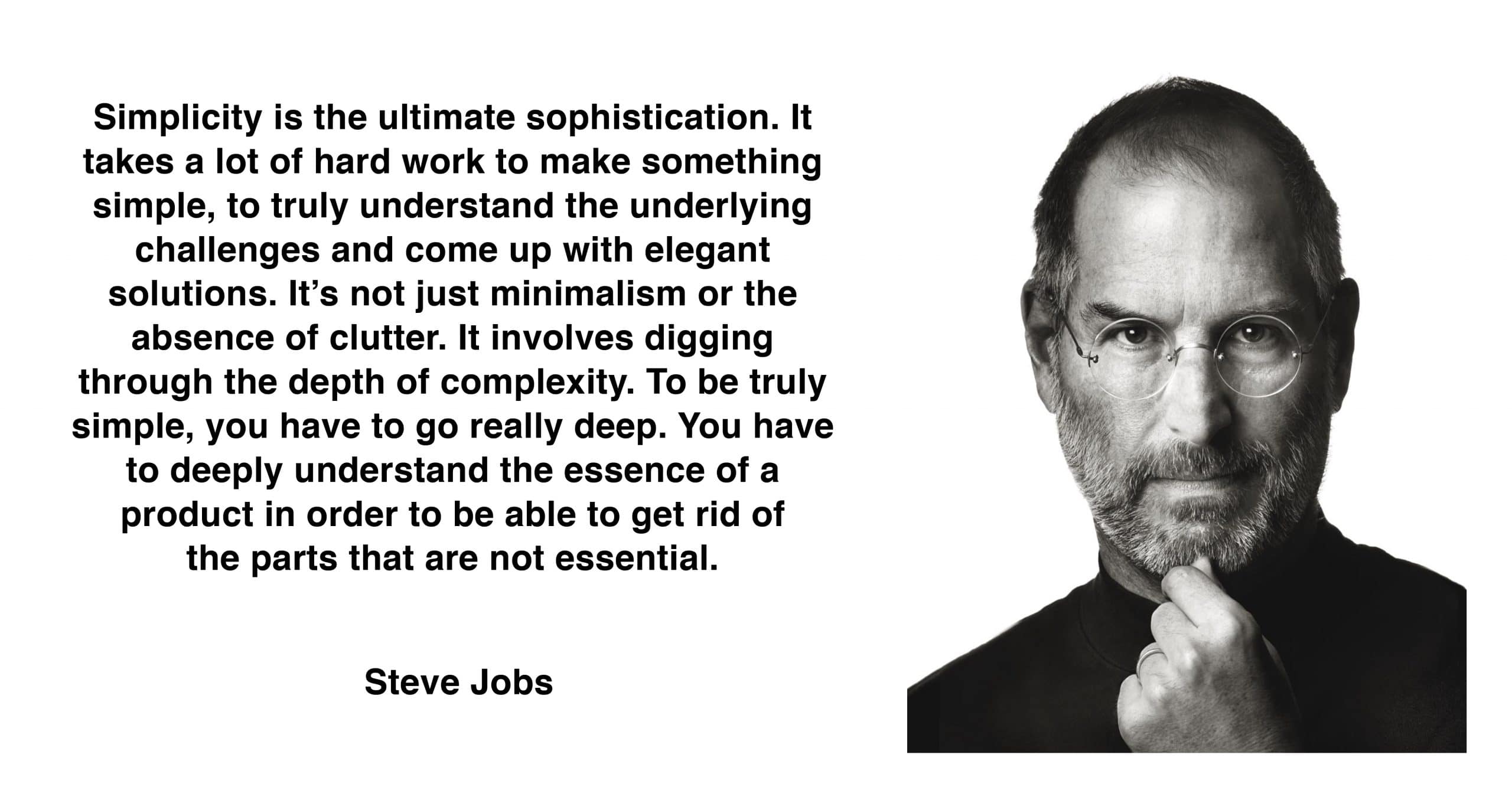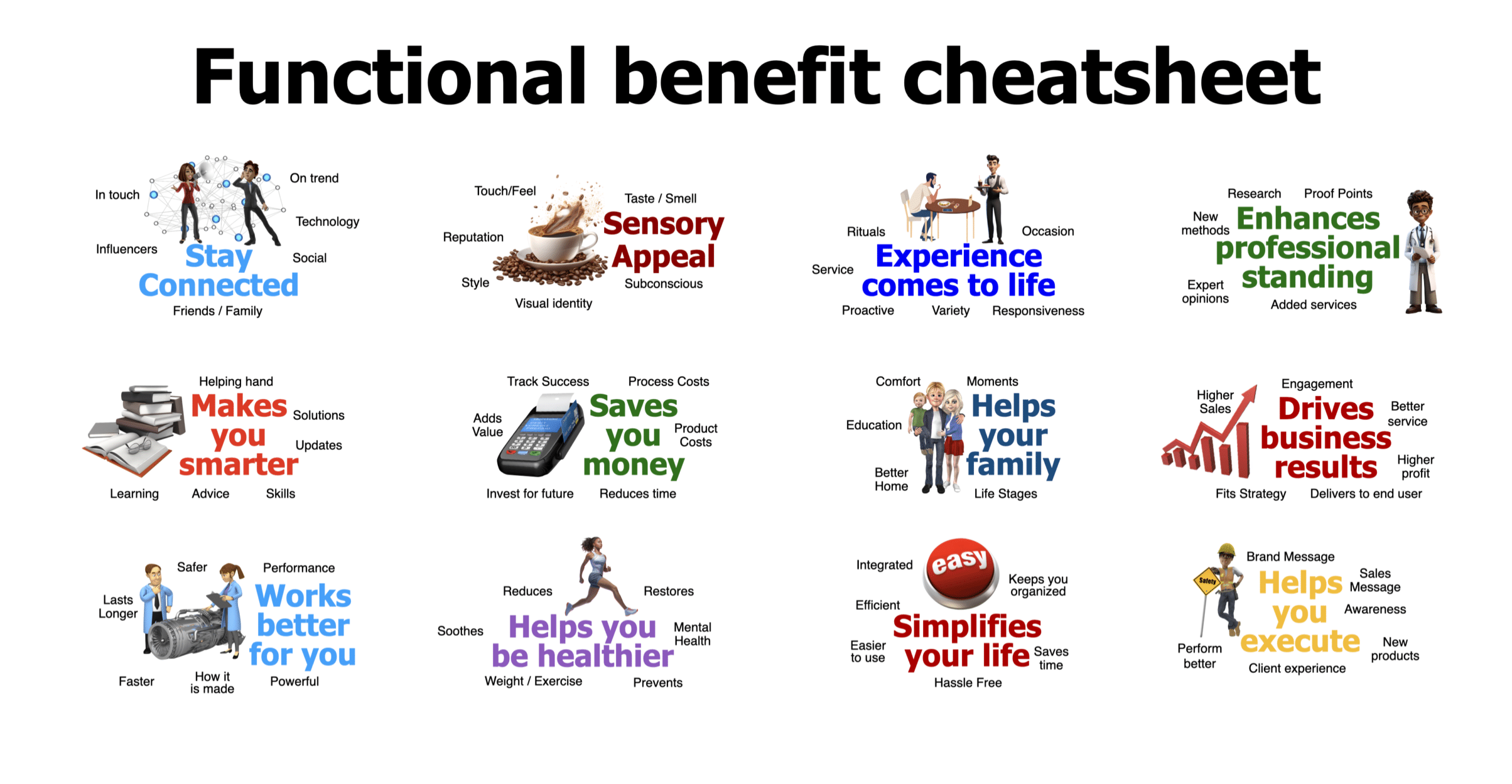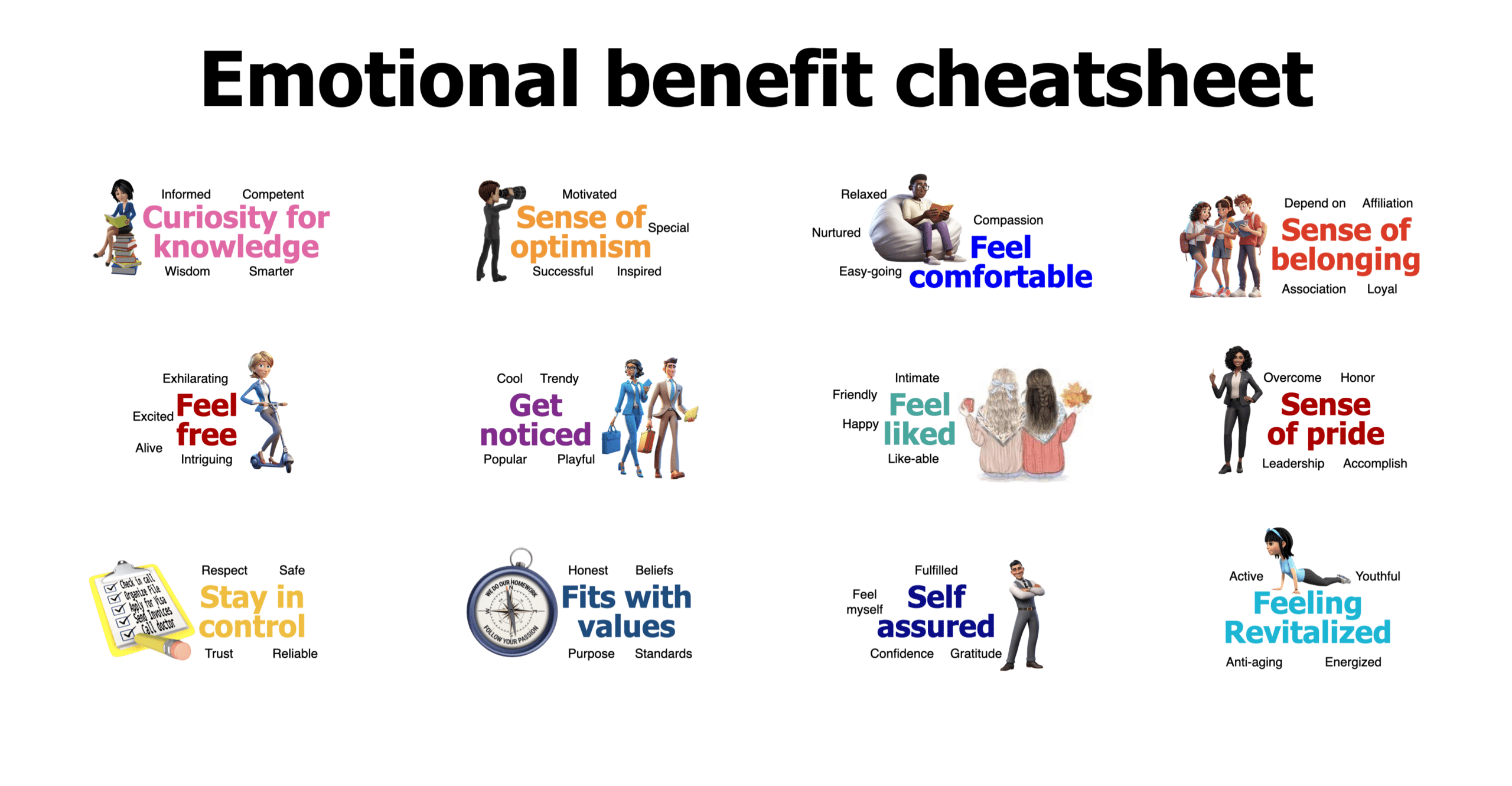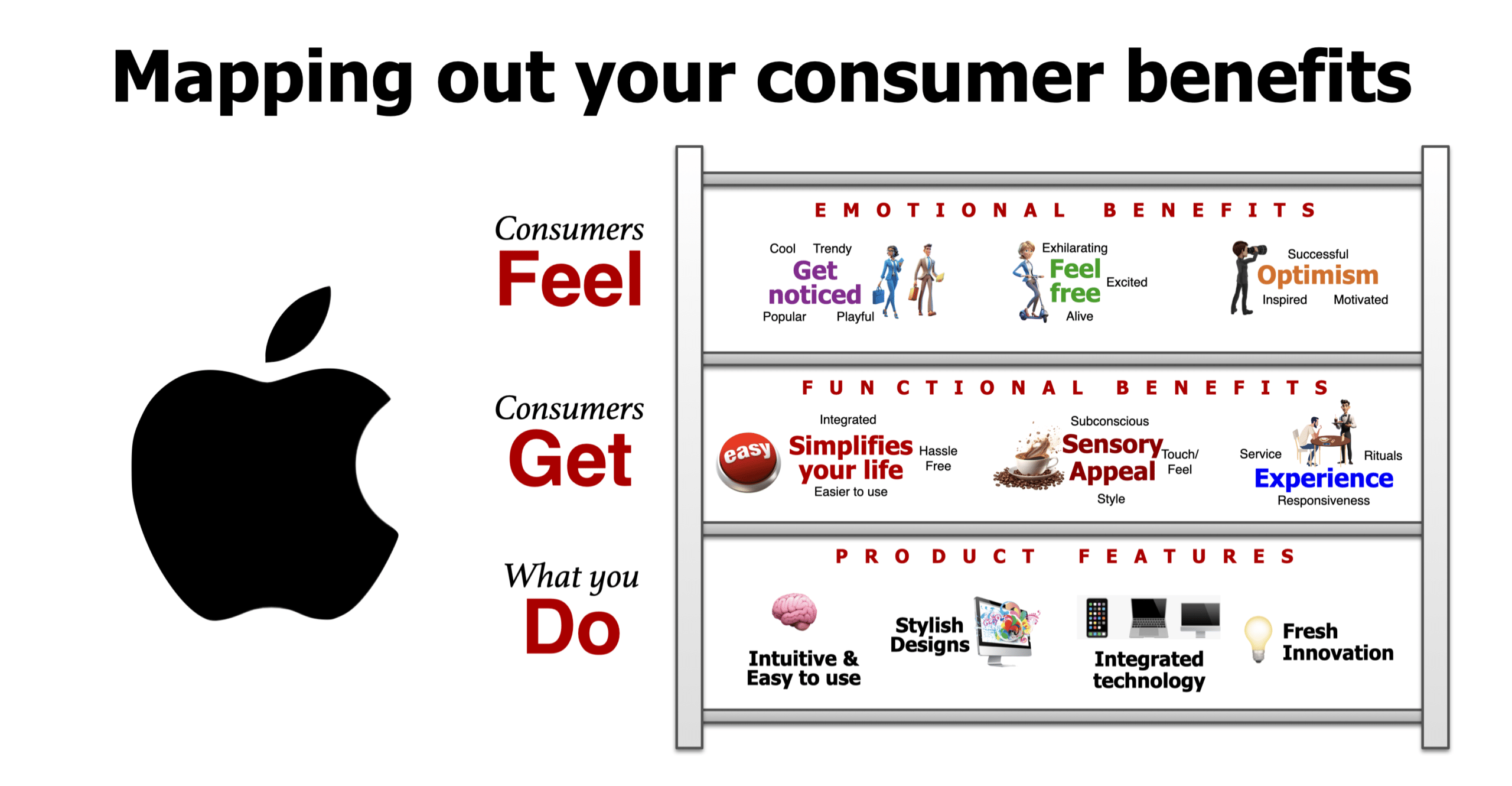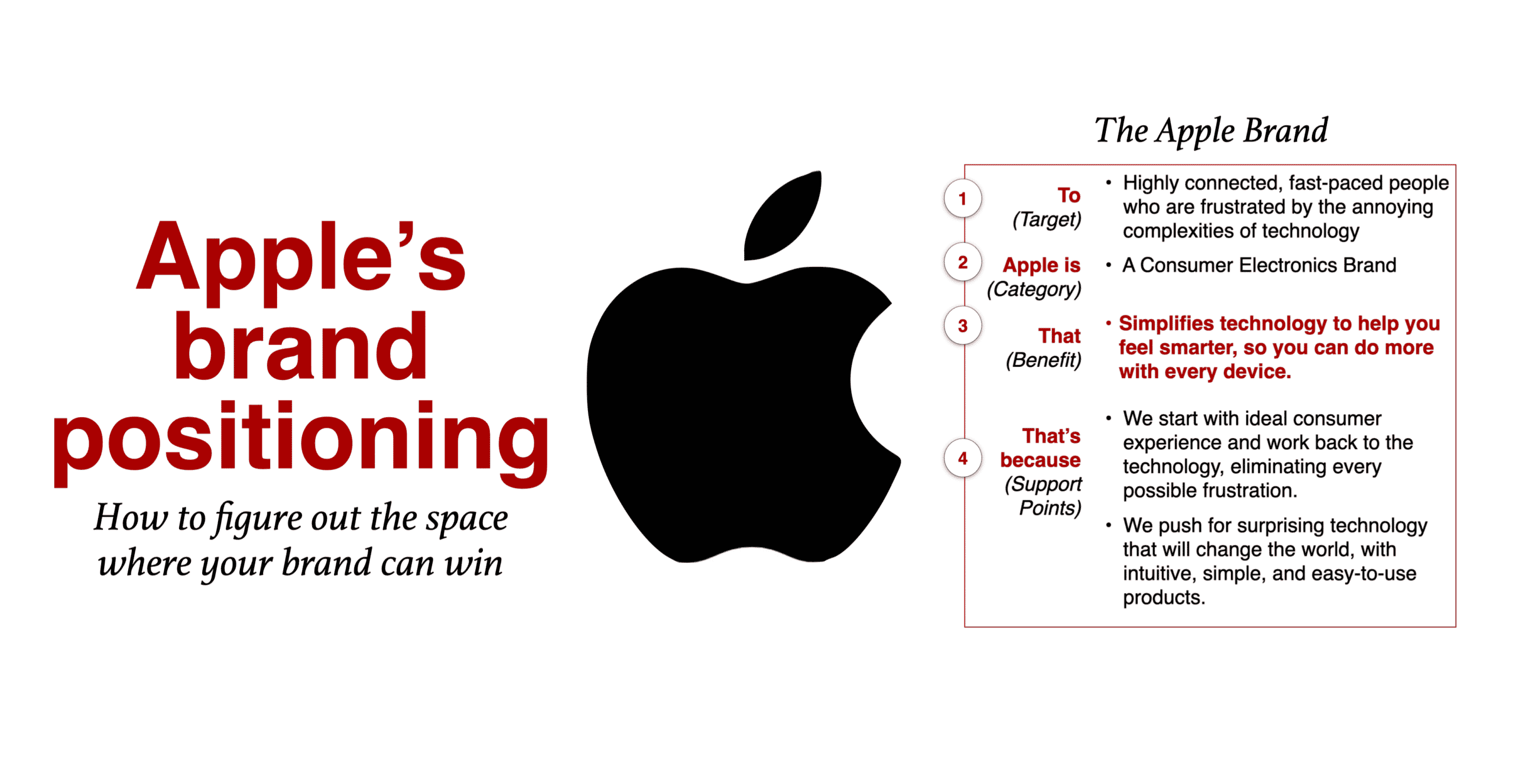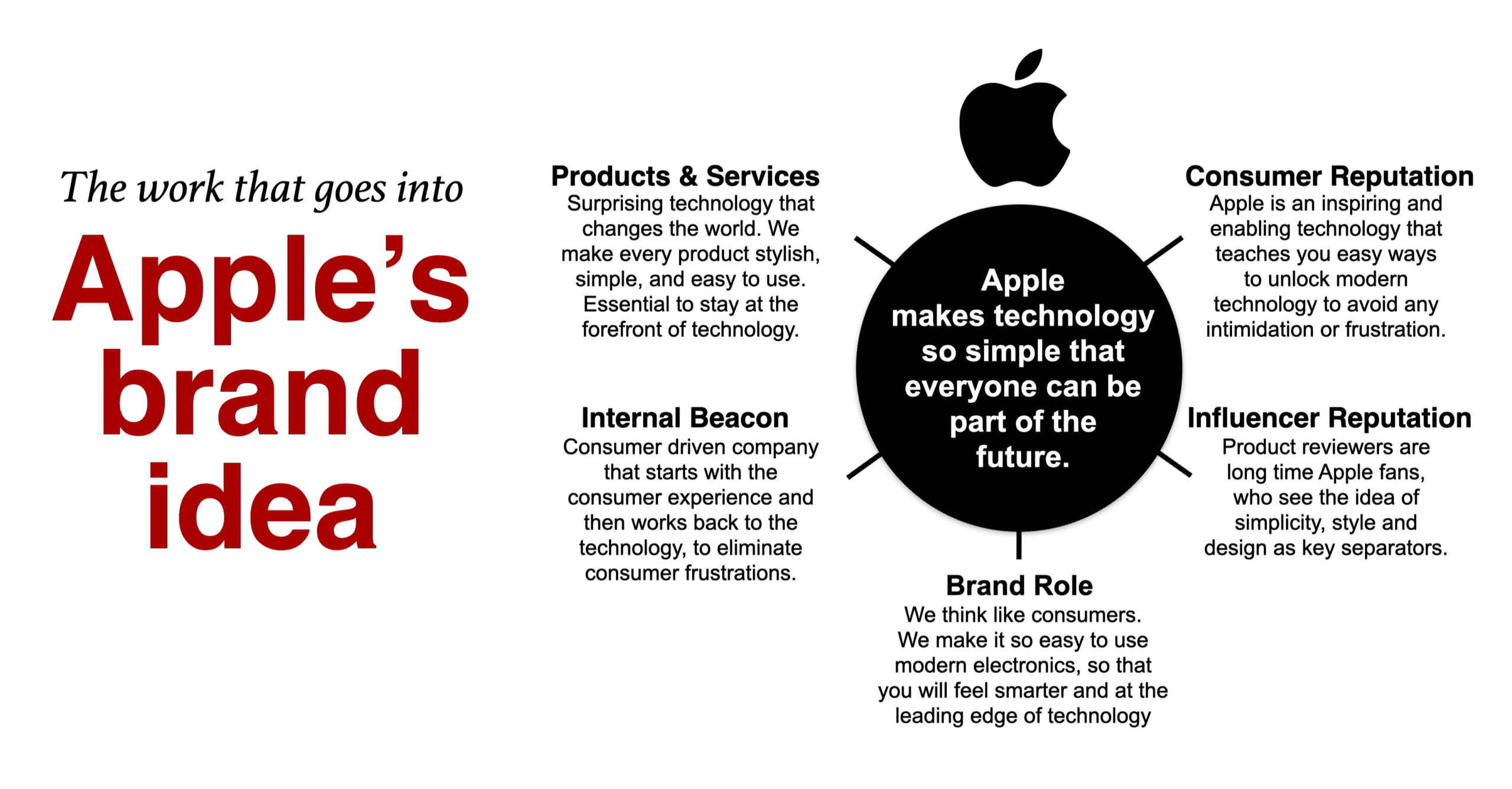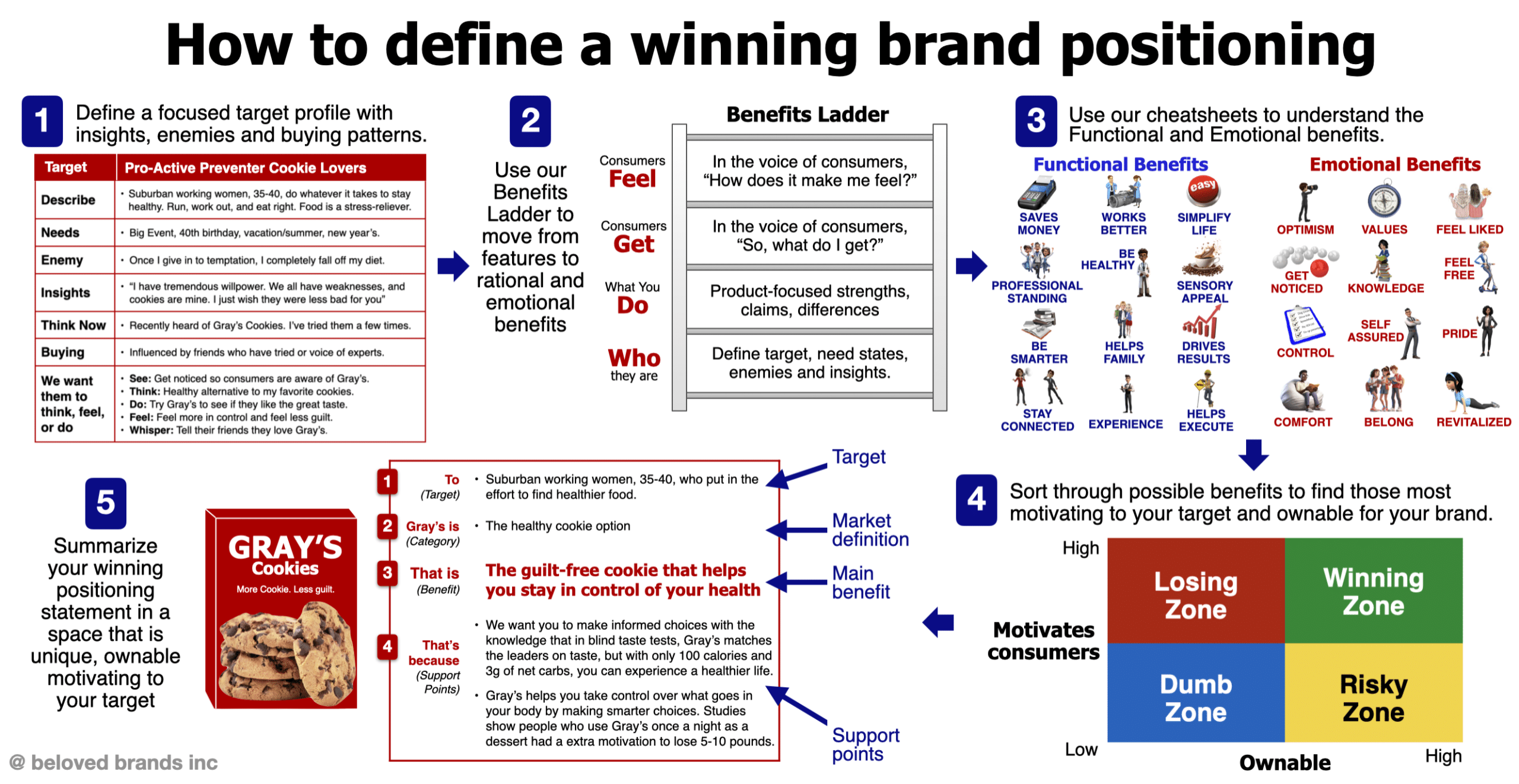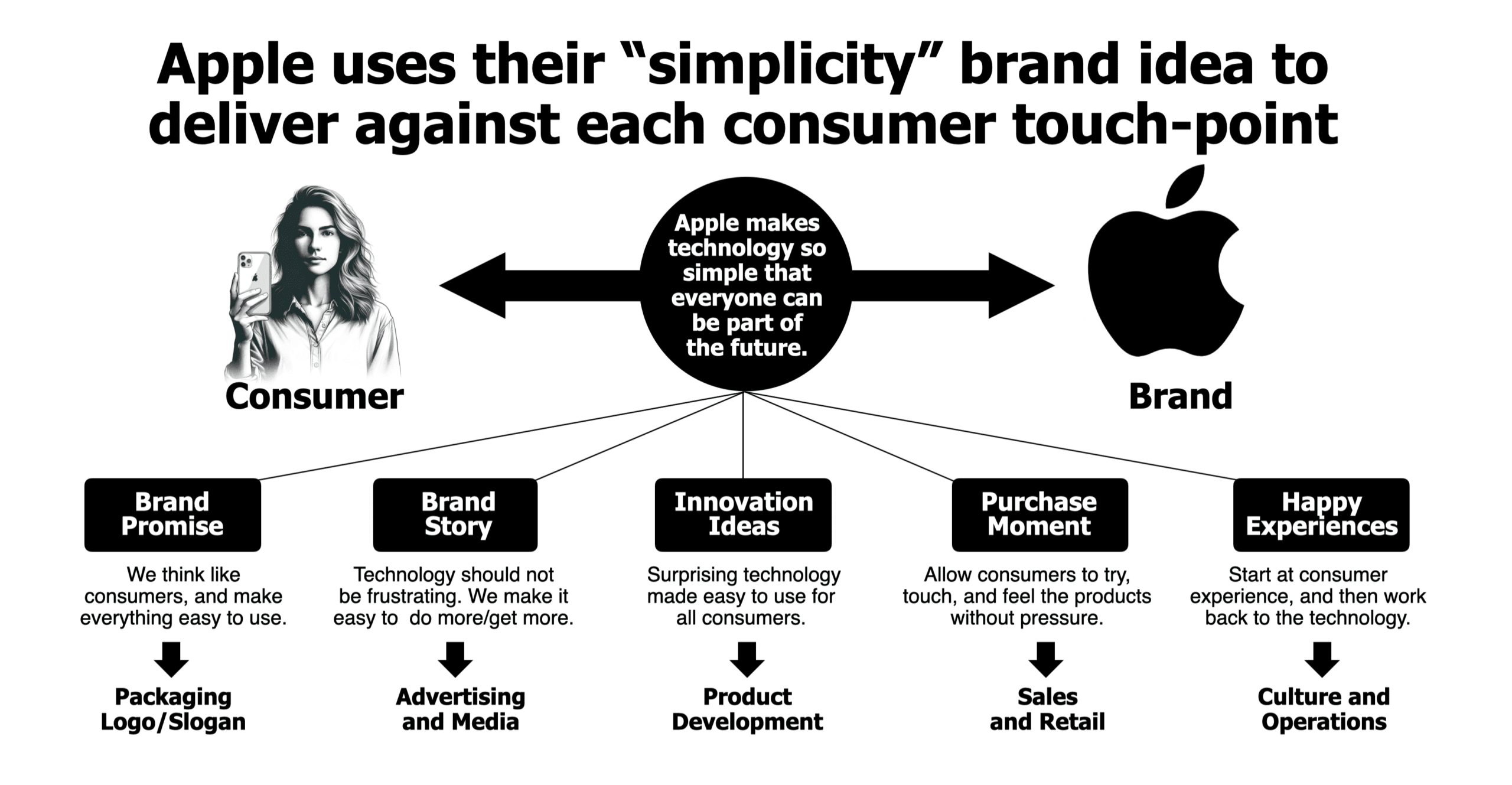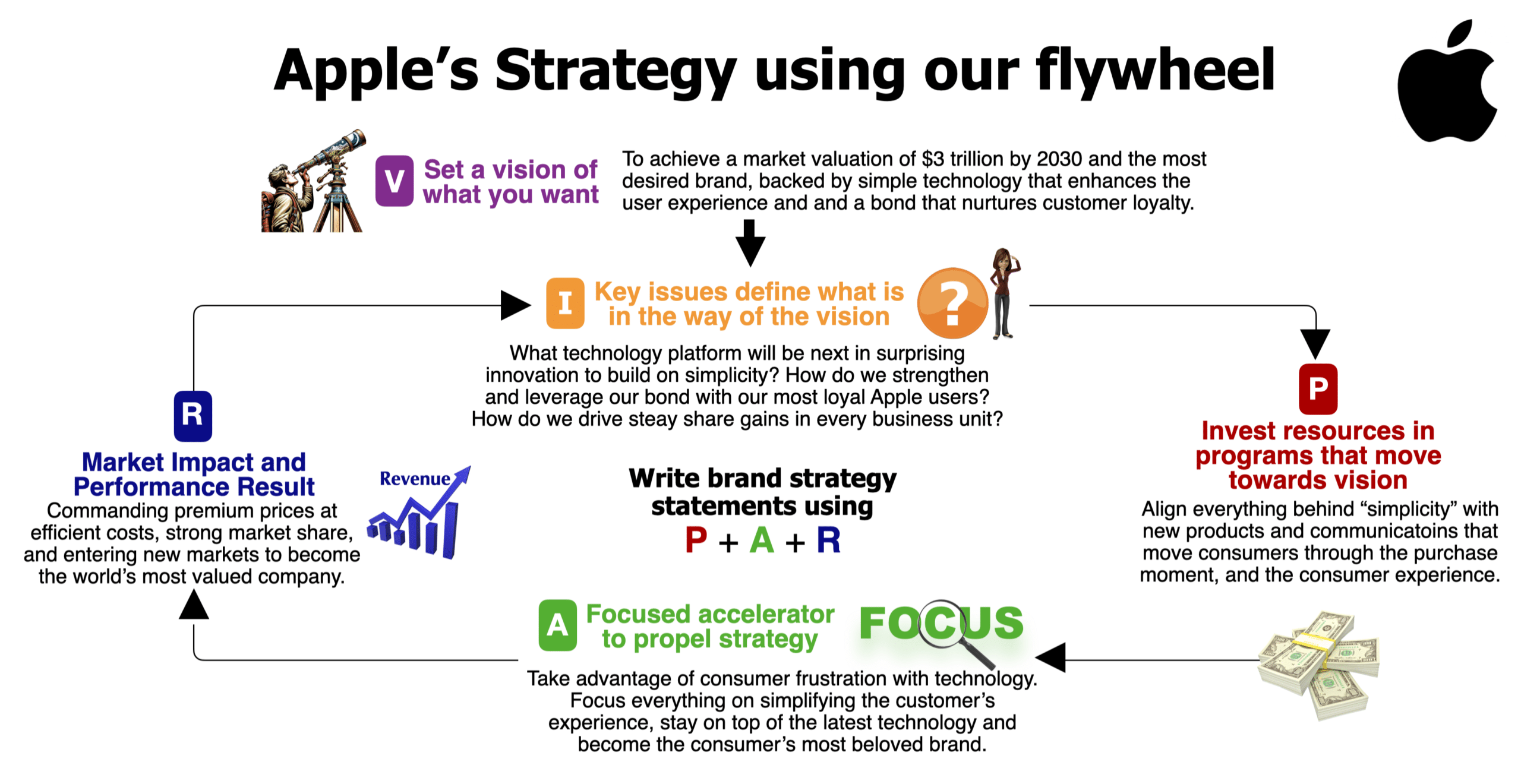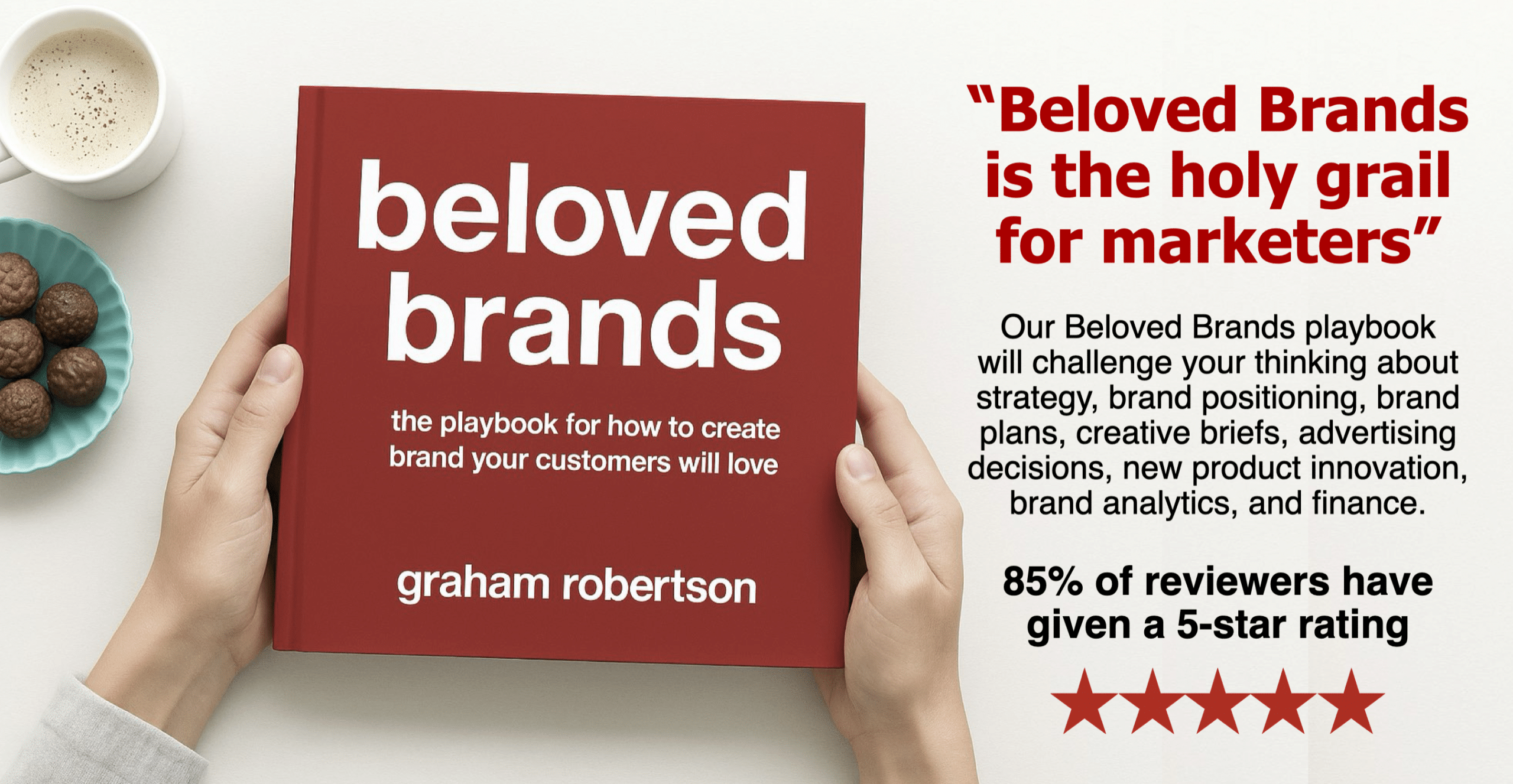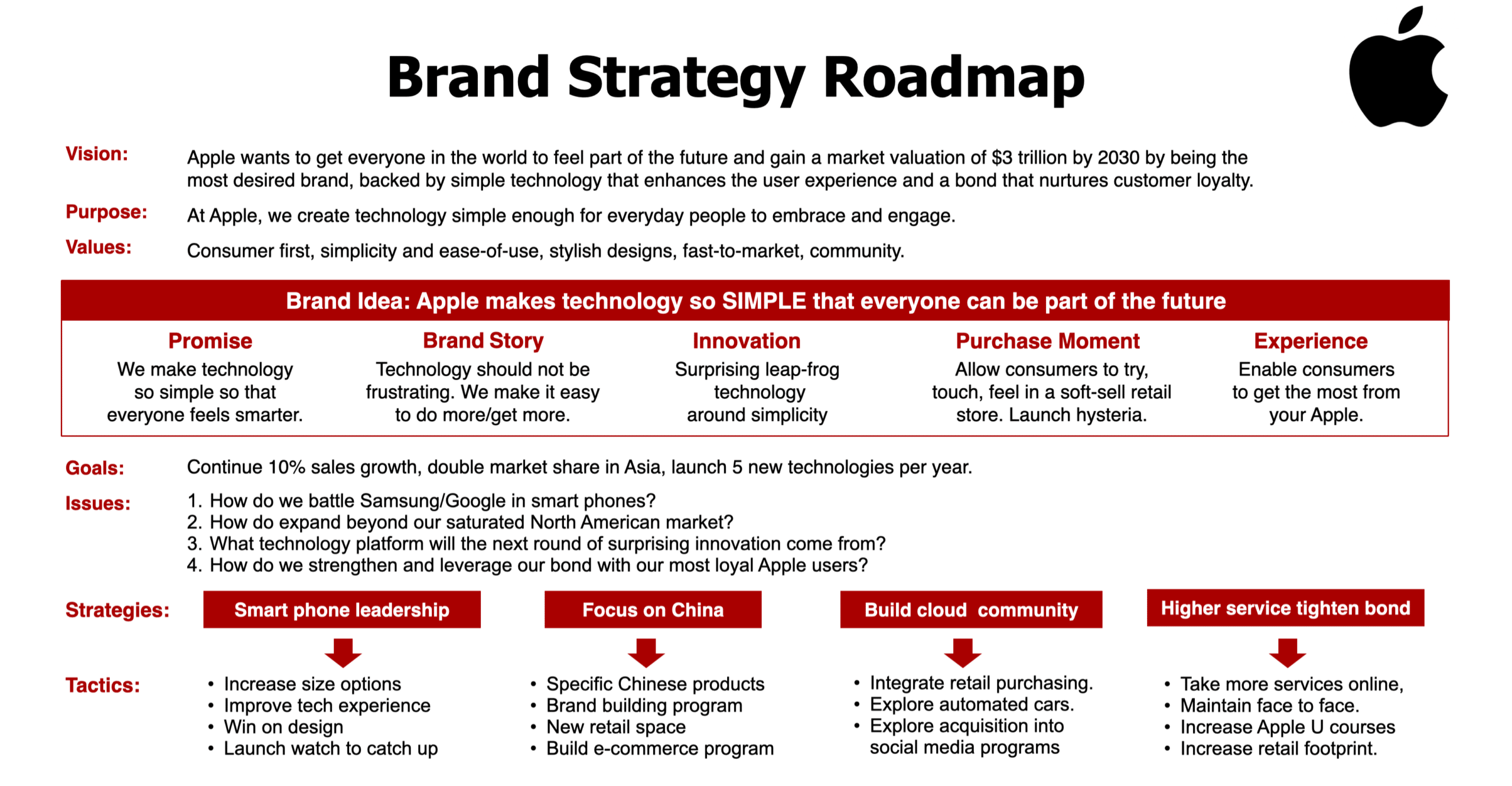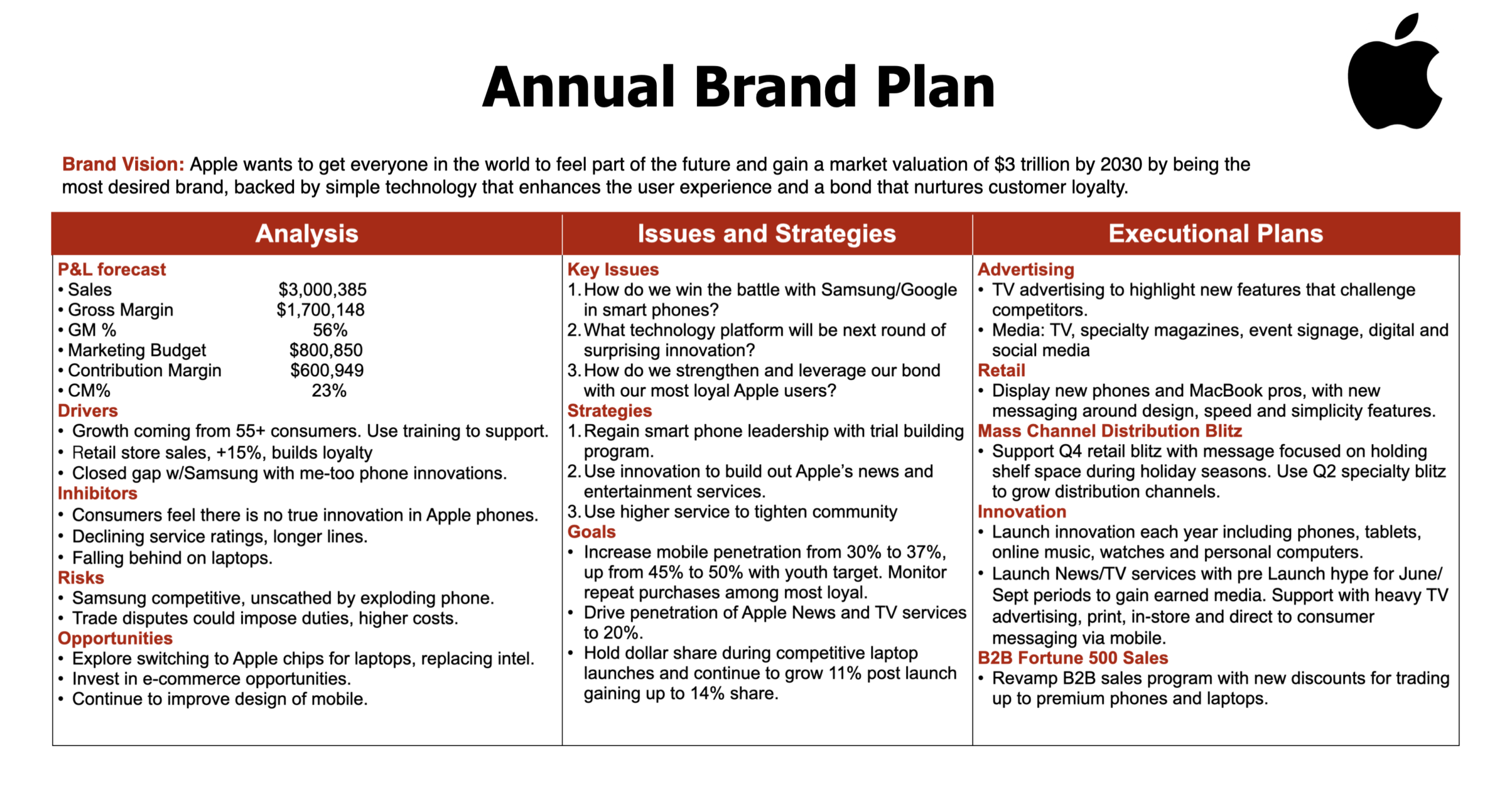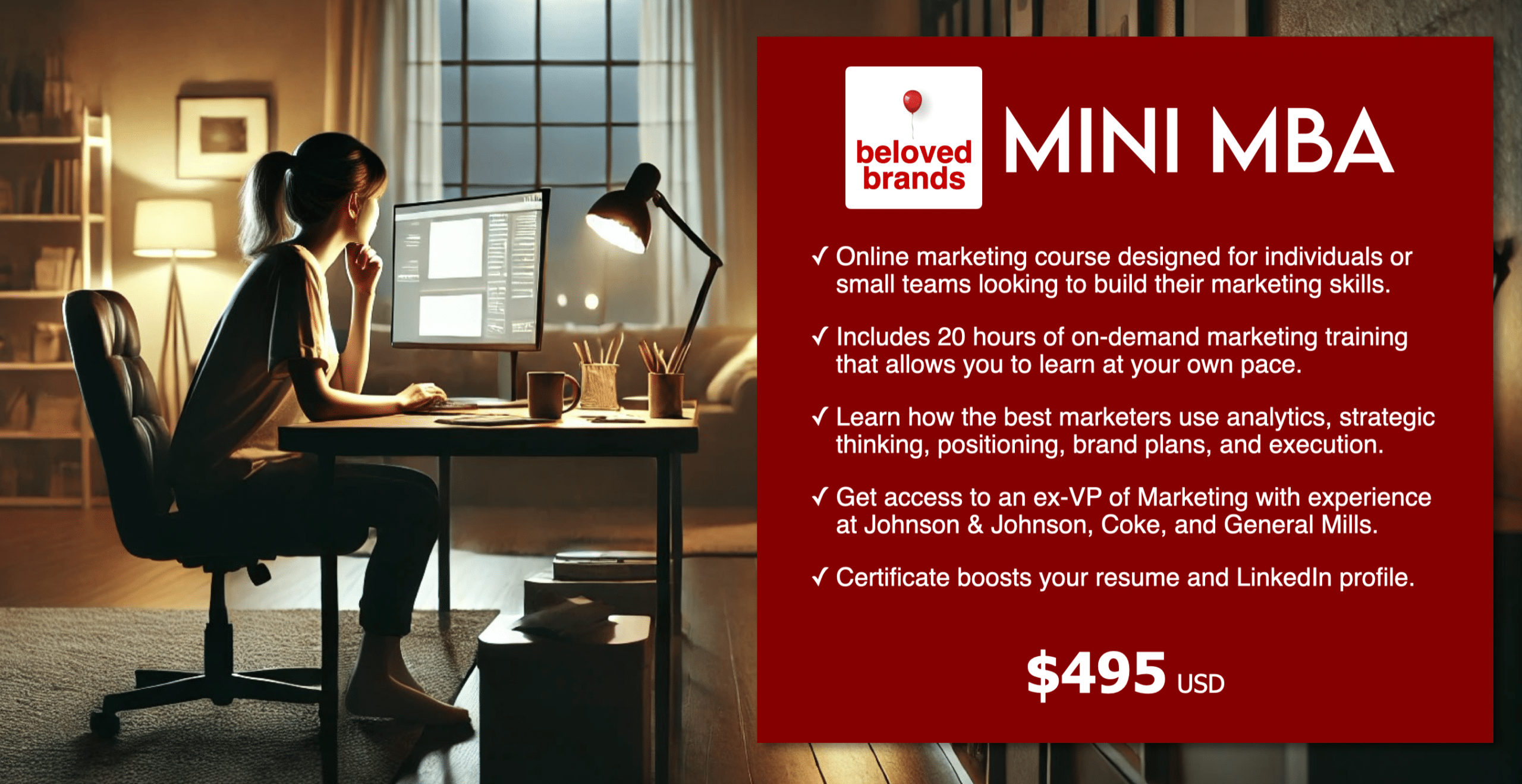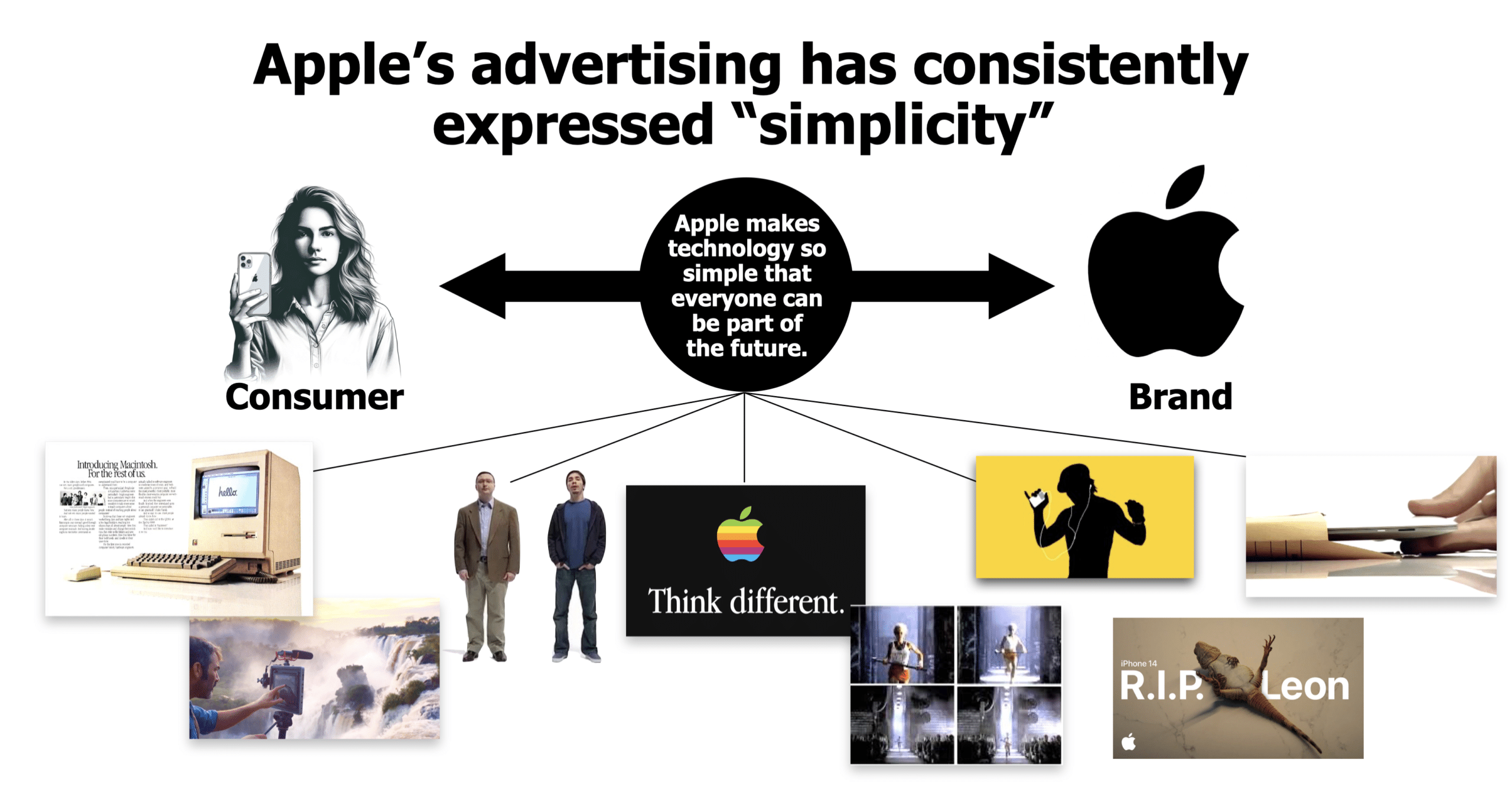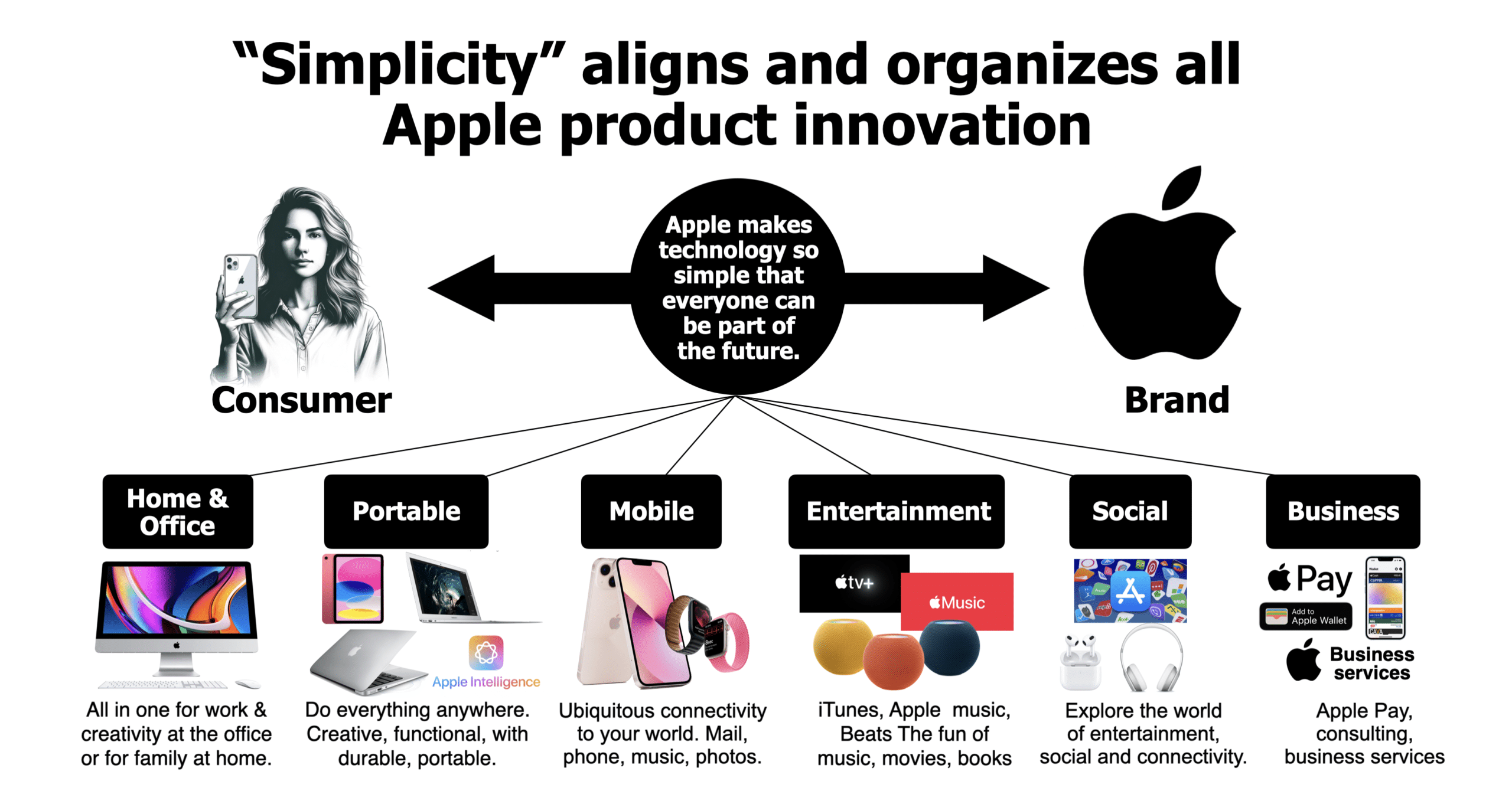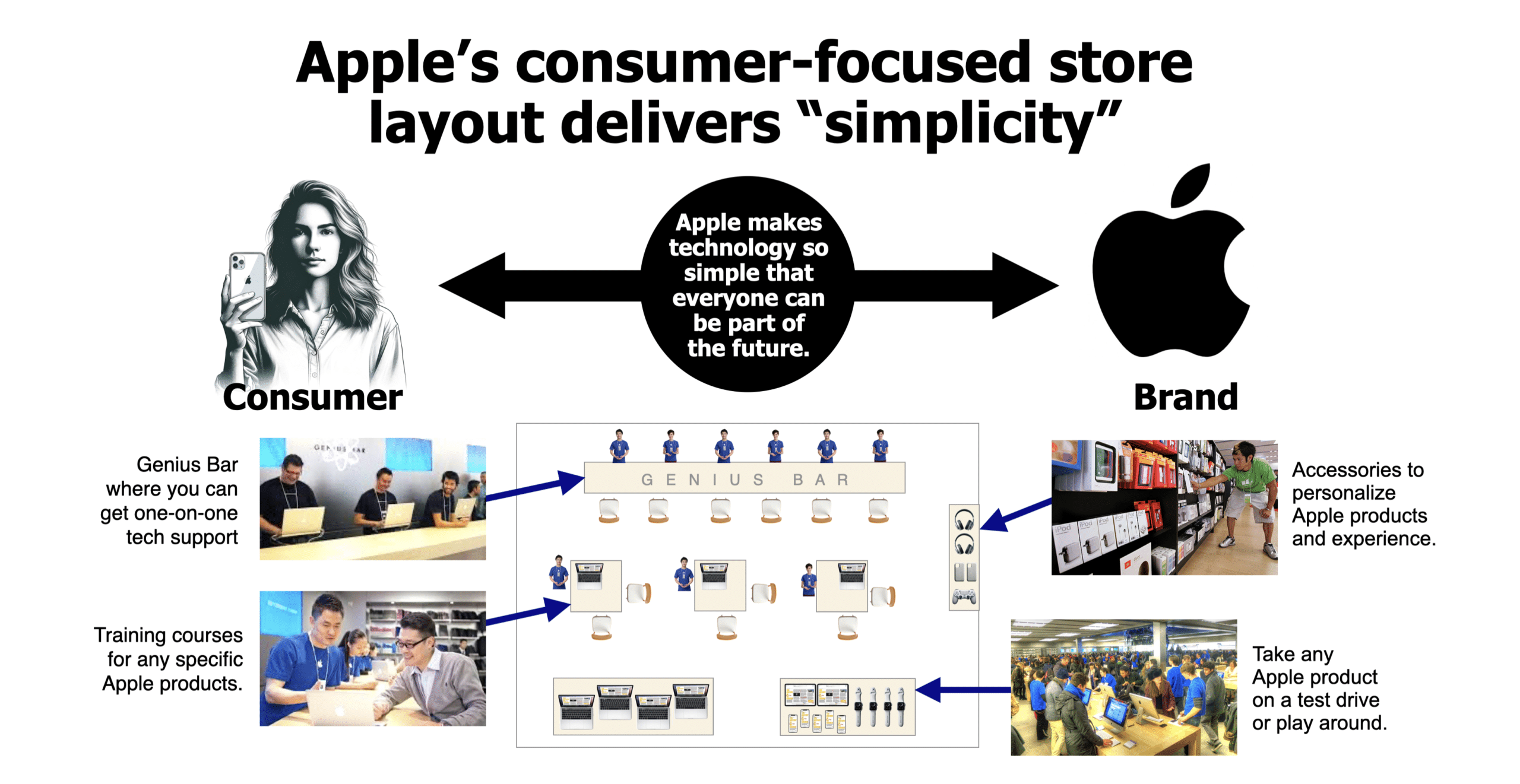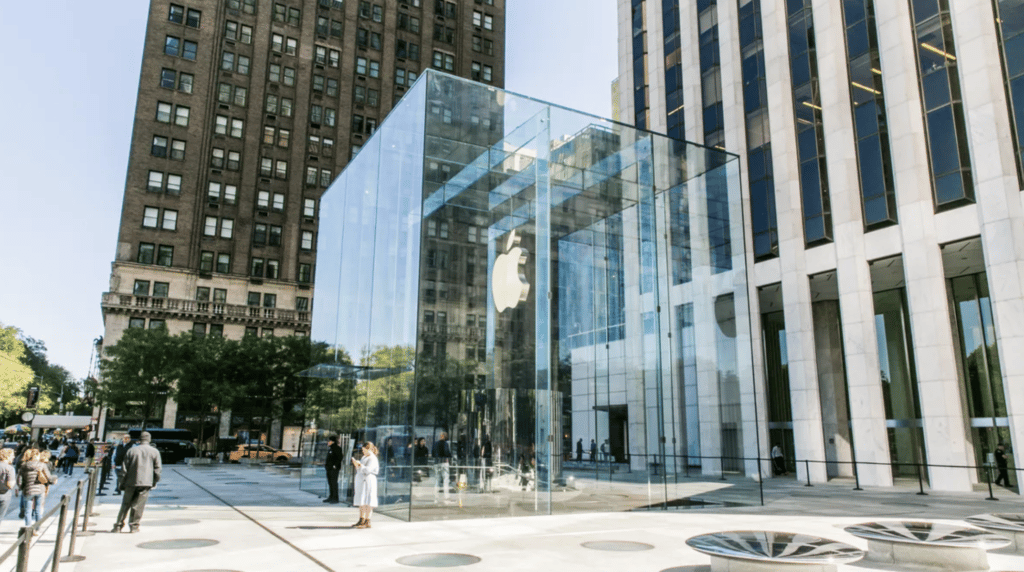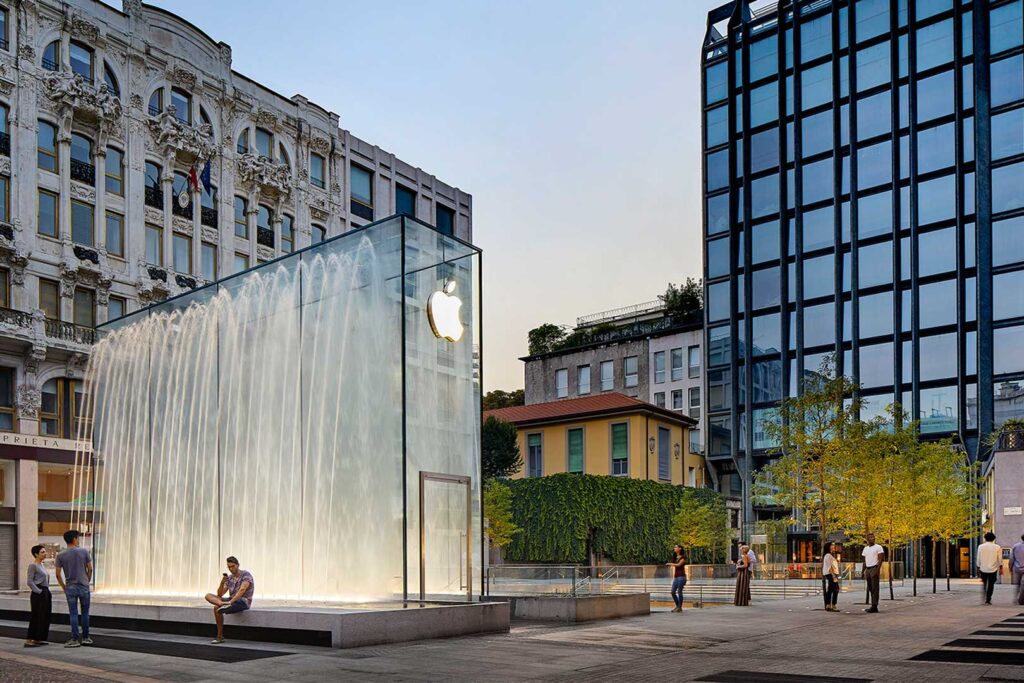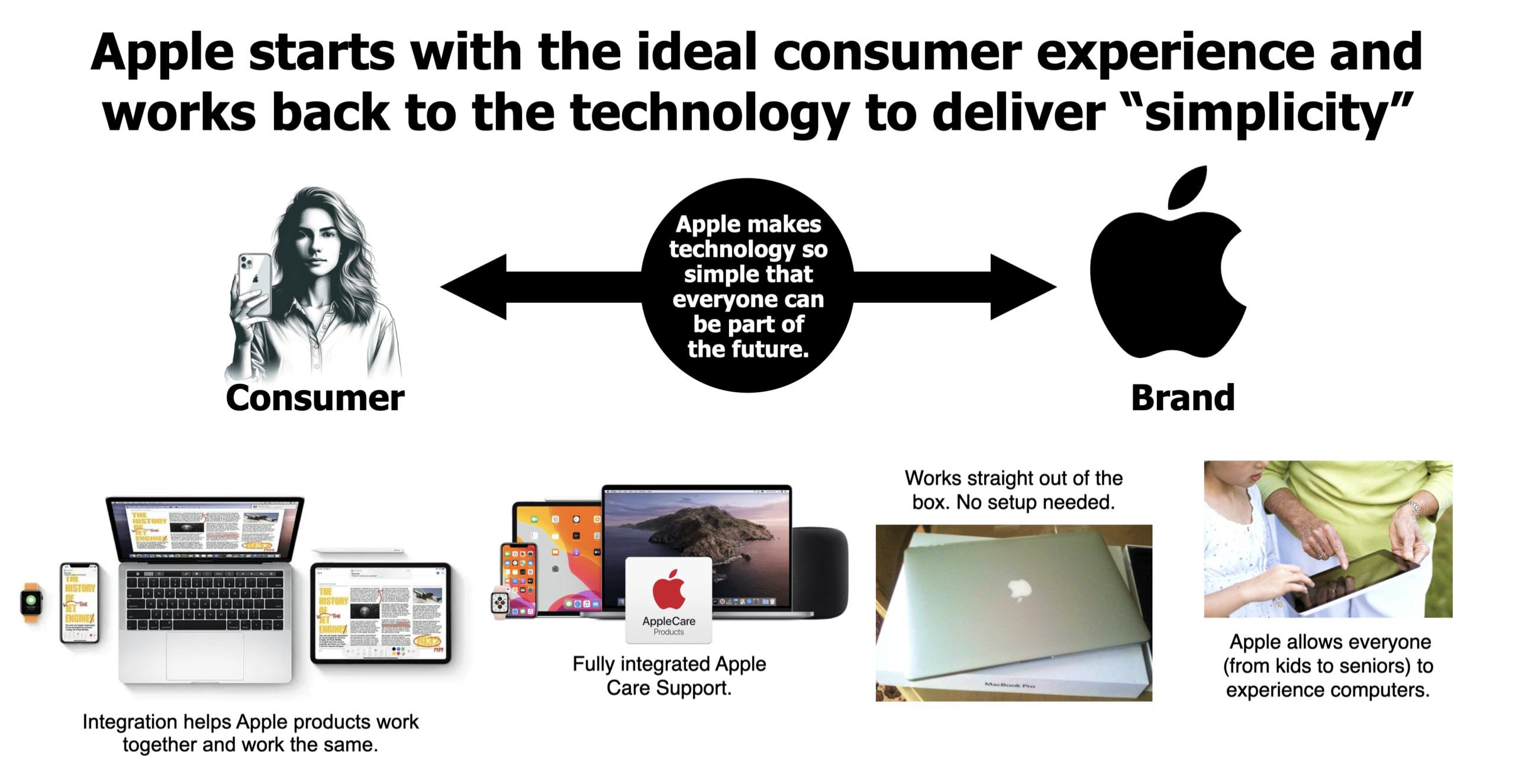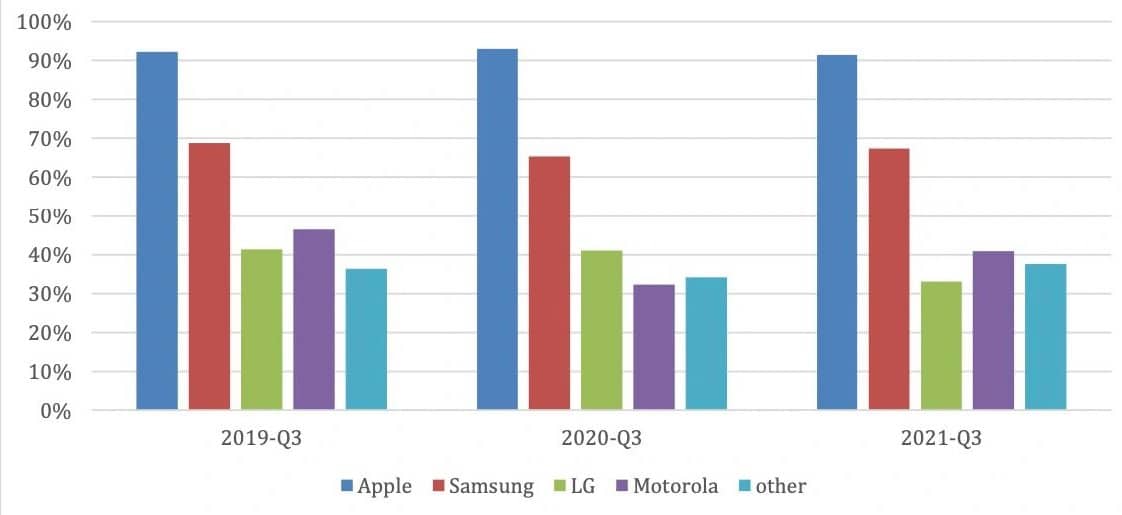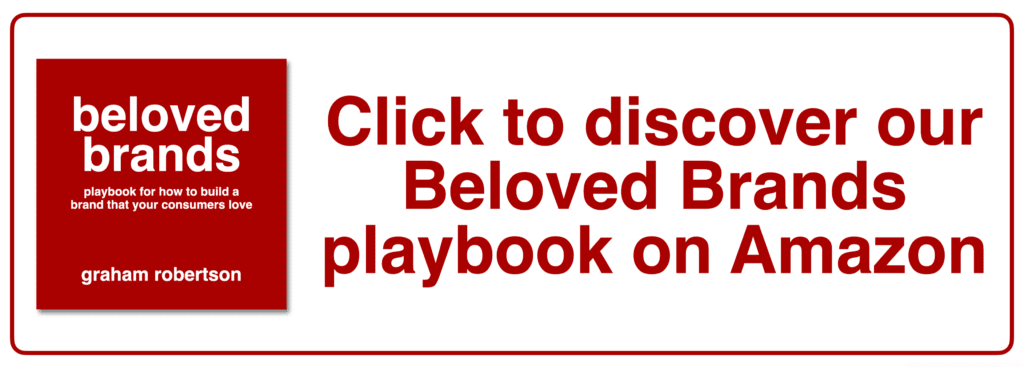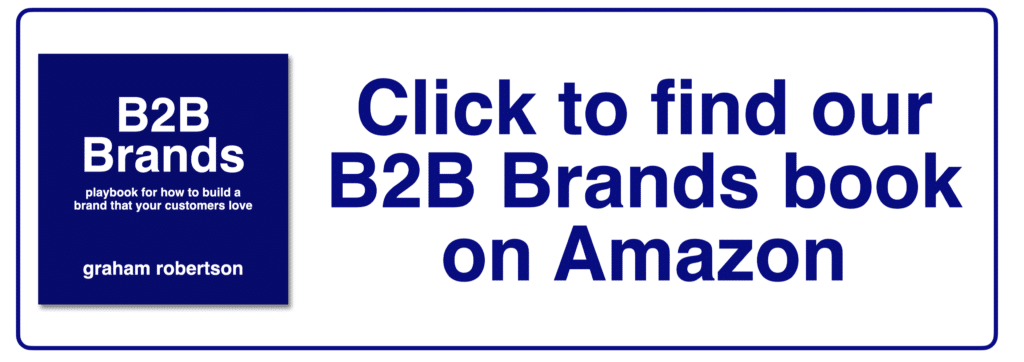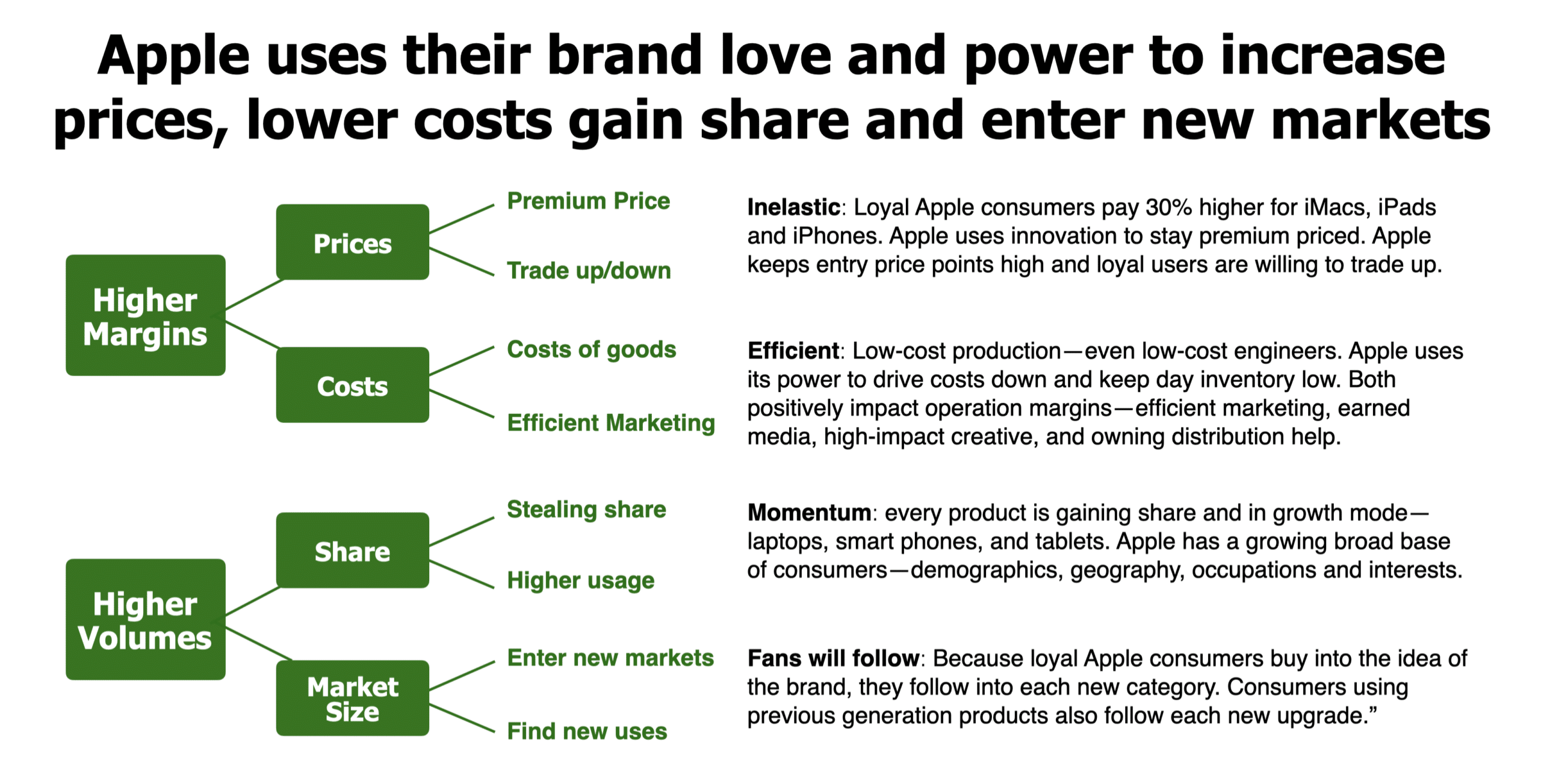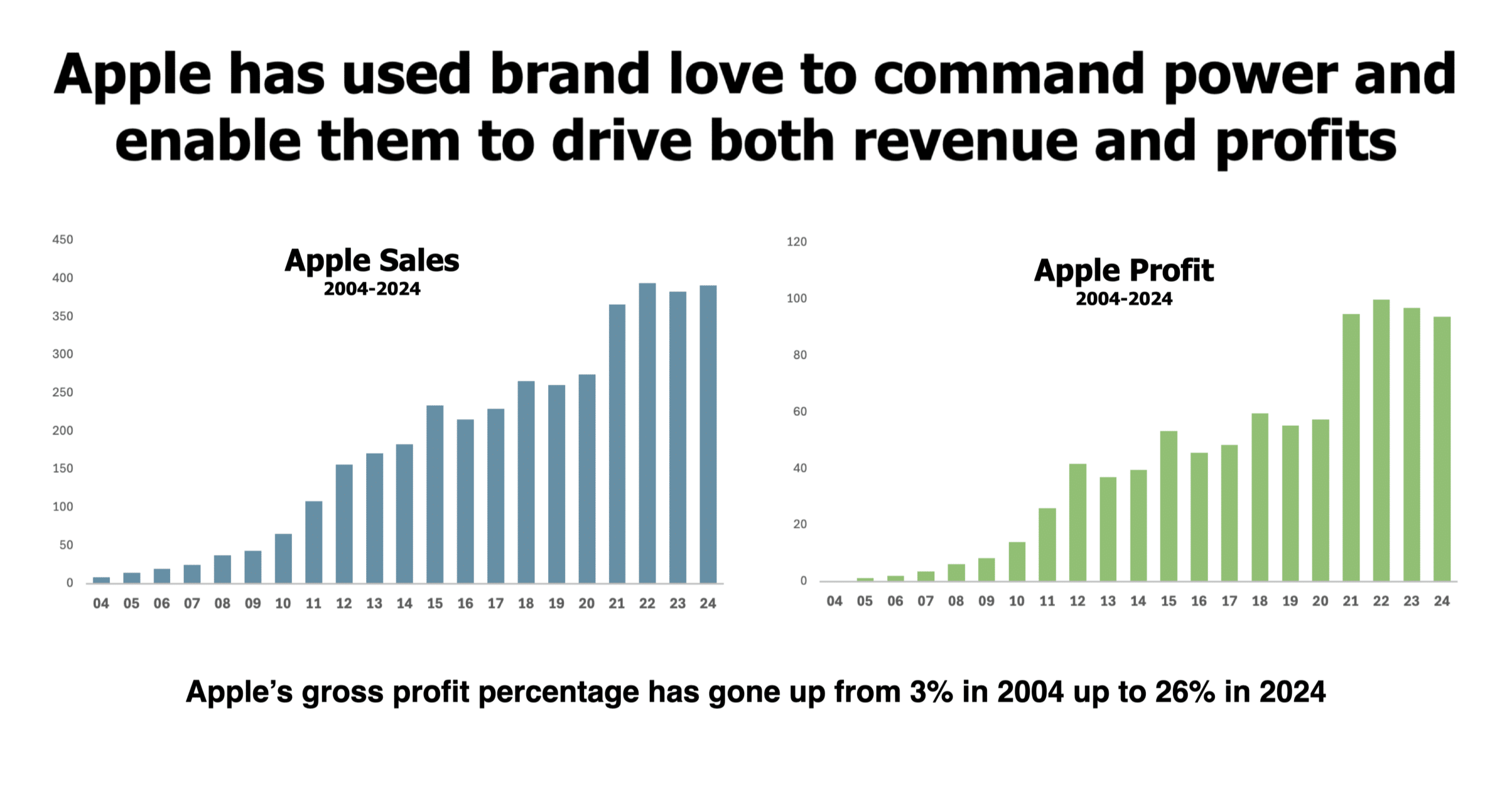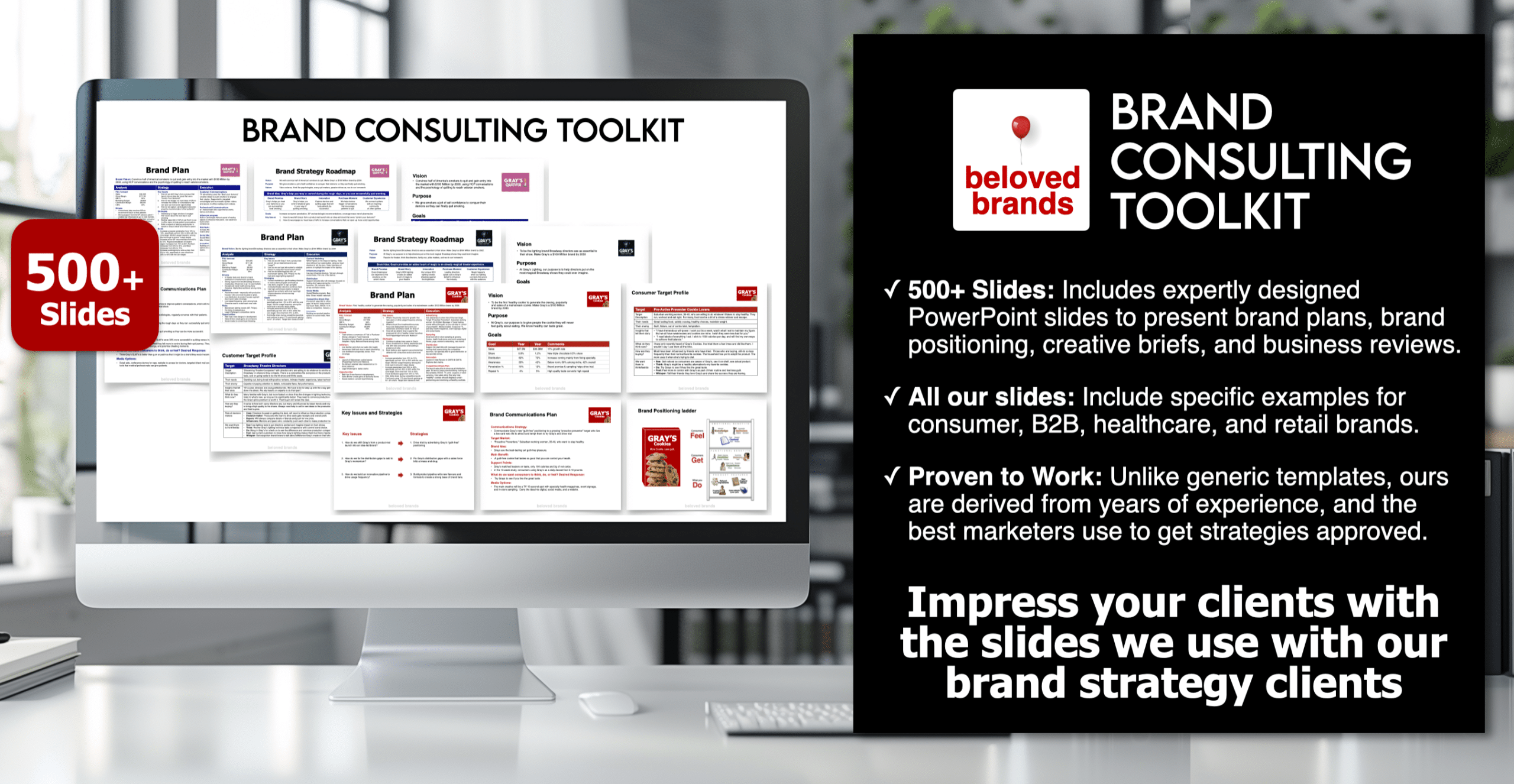Our Apple case study starts with 𝘁𝗵𝗲 𝗱𝗮𝘆 𝗦𝘁𝗲𝘃𝗲 𝗝𝗼𝗯𝘀 𝗿𝗲𝘁𝘂𝗿𝗻𝗲𝗱 𝘁𝗼 𝗔𝗽𝗽𝗹𝗲. This is the starting point that 𝘁𝗿𝗮𝗻𝘀𝗳𝗼𝗿𝗺𝗲𝗱 𝗔𝗽𝗽𝗹𝗲 𝗶𝗻𝘁𝗼 𝗼𝗻𝗲 𝗼𝗳 𝘁𝗼𝗱𝗮𝘆’𝘀 𝗺𝗼𝘀𝘁 𝗮𝗱𝗺𝗶𝗿𝗲𝗱 𝗯𝗿𝗮𝗻𝗱s. Steve Jobs recognized that consumers were frustrated by how all the other technology brands designed their products in a lab without any thought for the consumer. Steve Jobs made the most significant contribution to the Apple brand strategy by starting with the consumer experience and then working back to the technology. The Apple brand positioning builds everything around the idea that “Apple makes technology so simple that everyone can be part of the future.”
Moreover, we witnessed the most incredible decade that any company has ever seen, with Apple launching iTunes, iPod, iMac, the MacBook Pro, MacBook Air, iPhone, and the iPad.
If you are a fan of Apple, click on this link to view their best store locations: Apple Store locations. Or come see some of their best advertising: Apple Advertising.
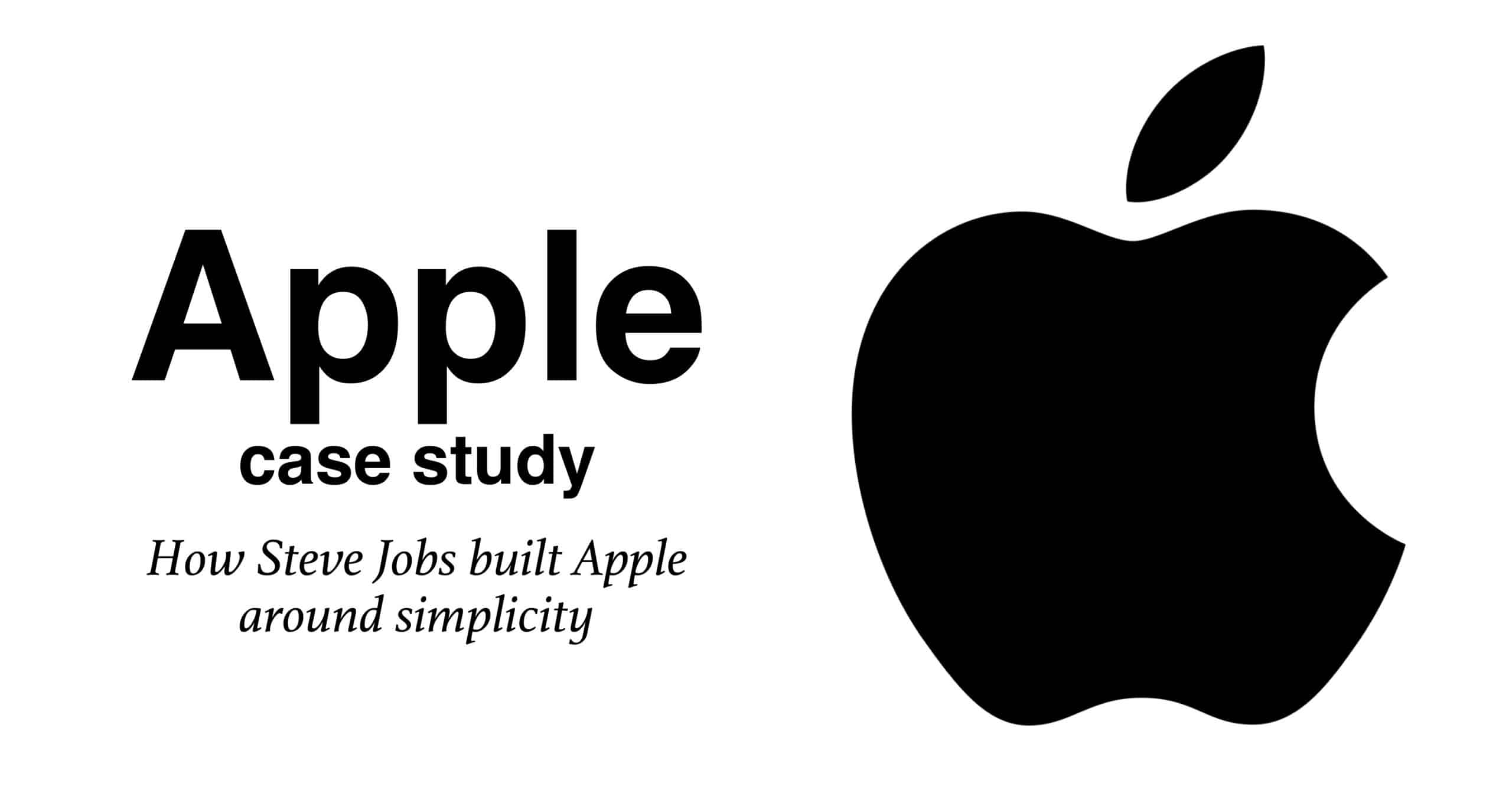
Apple Case Study - Table of Contents
Building the Apple brand
Our Apple case study will show how to develop Apple’s brand positioning statement and plan. Then, I will show how Steve Jobs pushed to stretch their “simplicity” brand idea across their company. Everyone who works behind the scenes knows their role in delivering simplicity.
Simplicity drives all Apple advertising.
In the 1980s, Apple started with “technology for the rest of us” when they took on IBM. And they continued that attack with “I’m a Mac” ads that took on Microsoft. Simplicity drives Apple’s innovation. Steve Jobs pushed for great advertising.
The beauty of Apple is how they take complex technology and simplify it so consumers can do more with Apple products.
The Apple brand strategy even drives their retail stores. Their Genius bar helps answer technology questions. They allow consumers to play with their products. Apple salespeople are trained to avoid “geek speak.”
The return of Steve Jobs
After Steve Jobs returned in 1997, he shifted the focus to rebuilding around the brand idea of “Apple makes technology so simple that everyone can be part of the future.” Jobs came in with a consumer-first approach in a market dominated by an obsession with gadgets, bits, and bytes. At the heart of our Apple case study is the use of the brand idea of simplicity and its impact on the brand strategy.
Undoubtedly, simplicity is one of the values Steve Jobs held very close to his heart. For example, he built simplicity into everything Apple did and everything it stood for. Even over the last decade, Apple is still following the Steve Jobs playbook.
Apple Brand Positioning - 'Simplicity'
The Apple brand positioning builds everything behind the “simplicity” brand idea.
We use our consumer benefit ladder to find differentiation. Importantly, turn your brand’s features into consumer benefits. Stop thinking about what your brand does. And, start thinking about what your consumer gets. That’s when the Apple brand positioning statement comes alive.
Functional consumer benefits.
To help brand leaders kickstart their brand positioning work, I have created 12 functional zones that expand to over 50 potential functional benefits. For instance, as you look through the list, gravitate to the functional benefits you think will fit your consumers’ needs and differentiate your brand by looking for words where your brand does it better than competitors. While you might start with our words, try to layer in your own creative language with the specific category or consumer language.
To illustrate, click on our Consumer Benefit Cheatsheet to build the Apple brand positioning.
Emotional consumer benefits.
Below is a list of 40 potential emotional benefits that help build an emotional brand positioning statement that differentiates your brand. Importantly, you want to own one emotional space in the consumer’s heart as much as you own the rational space in the consumer’s mind.
To illustrate, click on our Consumer Benefit Cheatsheet to build the Apple brand positioning.
Choosing the right benefit clusters for Apple
Using our brand positioning process, the Apple brand positioning narrows in on the brand’s potential benefit clusters of the functional and emotional benefits.
What Apple does: best features
- Intuitive and easy to use: Apple allows everyone to do more and get more from their devices.
- Stylish designs: Fashion-forward designed so that people want to show them off.
- Integrated technology: All devices, software, and services work harmoniously, enhancing user experience.
- Fresh innovation: Apple customers always have access to cutting-edge features and advancements.
What Apple consumers get: functional benefits
- Simplifies your life: Hassle free, easier to use, integrated.
- Sensory Appeal: Touch/feel, subconscious, and style.
- Experience: Responsiveness, rituals, and service.
How Apple consumers feel: emotional benefits
- Feel free: Alive, excited, exhilarating.
- Get noticed: Cool, trendy, popular, and playful.
- Optimism: Successful, inspired, and motivated.
To illustrate, click on our Consumer Benefit ladder we use to build the Apple brand positioning.
Apple Brand positioning statement
Once everything is settled, the overall Apple brand positioning statement focuses on simplifying technology to help you feel smarter so you can do more with every device.
To illustrate, click on the Apple Brand Positioning Statement. You can zoom in, download it, or share it.
Beloved Brands Marketing Training
The smarter your team, the better the results you will see!
As a marketing team leader, you know your team’s success is essential for your company’s growth. Our Beloved Brands Marketing Training gives your team the skills to make smarter strategic decisions, produce exceptional work, and drive business growth. They will learn to define brand positioning, write effective plans, improve brief writing, make informed execution decisions, and analyze their brand’s performance.
🛠️ We build essential Marketing Skills
Our Beloved Brands Marketing Training will equip your marketing team with the essential marketing skills to meet your expectations, including brand analytics, strategic thinking, brand positioning, strategic planning, and marketing execution.
📈 Marketers will work on their own brand
We impact your marketing team’s on-the-job performance by ensuring your marketers apply every new tool, method, and skill directly to their brand.
🚀 Our marketing coaching is like having a VP in the room
Our hands-on coaching replicates real-world challenges, with your marketers experiencing the pressure and expectations they face in a boardroom
🌍 Custom-Tailored Marketing Training Programs
We provide specialized marketing training tailored to different business models, including Consumer, B2B, Retail, and Healthcare brands. Our industry-specific examples demonstrate how easily our tools work on a brand like the marketer is working on.
With our Beloved Brands Marketing Training, we will make your marketers smarter so they thrive in today’s marketing world, produce better work, and drive stronger results.
Building Apple's Brand Idea
Everyone seems to call the short-form description of a brand by different names; brand DNA, big idea, brand essence or shout from the mountain. I keep it simple by calling it the brand idea. To win in the marketplace, your brand idea must be interesting, simple, unique, inspiring, motivating, and ownable.
I created a brand idea blueprint with five ideas that surround it.
On the internal brand soul side, describe the products and services and the cultural inspiration, which is the internal rallying cry to everyone who works on the brand. On the external brand reputation side, define the ideal consumer reputation and the reputation among necessary influencers or partners. The brand role acts as a bridge between the internal and external sides.
To illustrate, click on the Apple Brand Idea we use to build upon the Apple brand positioning.
The Apple case study uses the brand idea for Apple is “making technology so simple that everyone can be part of the future.” Most importantly, Steve Jobs insisted they take a consumer-first mentality as they transformed leading technology advancements into “consumer-accessible” technology, helping fuel the perception among the mass audience that Apple is an innovative leader.
To illustrate, click on the Apple Brand Idea Map we use to build upon the Apple brand positioning.
Apple Case Study - video
Our Apple Case study is part of our Beloved Brands Mini MBA. Take a look.
Below is an example video (30 minutes) from our Beloved Brands Mini MBA. We use the Apple case study to demonstrate the Apple brand positioning tools.
To view the Beloved Brands Mini MBA video, use the ▶️ button to play.
Apple Brand Strategy
How the five elements of smart strategic thinking sets up Apple's famous turnaround plan:
1. Set a vision of what you want.
To start our Apple case study, their vision is to make it easy for everyone to be part of technology in the future. The main issue was creating brand fans and then mobilizing them to spread the word to the masses.
2. Invest resources in a strategic program.
Next, Apple invested and aligned everything behind the Apple brand positioning and brand idea: “Apple makes technology so simple; everyone can be part of the future.” They use this brand idea at every touchpoint, including the brand positioning, communication, innovation, purchase moment, and experience.
3. Focus on an identified opportunity.
For decades, Apple consistently focused on empathizing with—and taking advantage of—the consumer’s frustration with technology. In the 1980s, they attacked IBM’s personal computers as too complicated. In 2005, they used “I’m a Mac, and I’m a PC” advertising to attack Microsoft. Each time, it used its “consumer-first” mentality to transform leading-edge technology into accessible consumer technology.
4. Leverage a breakthrough market impact.
Above all, the Apple brand strategy takes a fast-follower stance that takes current technology and makes it simple to use. Every platform, including desktops, laptops, phones, watches, tablets, and music streaming, delivers the brand idea of simplicity. They deploy high-profile launch hype to use vocal advocates to spread the word to their friends.
5. Performance result that pays back.
Most importantly, Apple created a consumer bond with its brand fans to enter new categories. On top of that, it is now the most beloved consumer-driven brand, with premium prices, stronger market share, sales, and profits. The Apple brand strategy used brand love to help drive a remarkable 40x revenue growth over ten years, skyrocketing from $5.7 billion in 2005 to $240 billion in 2015. This rapid growth helps cover the high costs of advertising and R&D, giving them very healthy operating margins, up over 35%. All this strategic effort has increased their market capitalization by over $1 trillion.
To illustrate, click on the Apple Brand Strategy diagram. You can zoom in, download it, or share it.
beloved brands
The playbook for how to create a brand your consumers will love.
If you are running a brand, Beloved Brands equips you with the marketing skills, tools, strategies, and insights needed to tackle every challenge in managing your brand. This is your essential resource to navigate the complexities of building and growing a successful brand.
📊 Brand Analytics to find insights
Our book teaches you how to conduct deep-dive brand audits to identify hidden challenges and address key issues, ensuring your brand remains competitive and poised for long-term growth.
💡Challenge your Strategic Thinking
You will learn to dive into thought-provoking questions designed to challenge your perspective and uncover new ways of seeing your brand. Gain clarity and unlock innovative strategies that set your brand apart.
🎯 Sharpen your Brand Positioning
We take a unique process for defining your brand positioning. Explore fresh ideas and uncover opportunities to differentiate your brand by leveraging functional and emotional benefits.
📝 Build a Brand Plan that defines a better future
With Beloved Brands, you will learn to craft a clear, actionable brand plan that aligns stakeholders and ensures every team member contributes to your brand’s growth and success.
📺 Master decision-making on Marketing Execution
You will learn to drive the marketing execution. From inspiring creative briefs to making impactful decisions on advertising and innovation, we guide your team through executing breakthrough marketing campaigns.
Apple Brand Plan
We are going to build out a Brand Strategy Roadmap that can steer the brand for the next three to five years. And, we’ll show a one-page Annual Brand Plan. We’ll show the rough brand plan work you can do.
To illustrate, click on the Apple Brand Strategy Roadmap. You can zoom in, download it, or share it.
The rough brand plan for Apple
With the Apple case study, our strategic thinking model sets up the core elements of the Apple brand strategy:
Vision:
To get everyone in the world to be part of the future and achieve a market valuation of $3 trillion by 2030 by being the most desired brand, backed by simple technology that enhances the user experience and and a bond that nurtures customer loyalty..
Goals:
Continue aggressive sales growth, geographic expansion into China, and launch a major new consumer-friendly technology each year.
Key issues:
- How do we convey Mac’s superior user experience versus the traditional PC?
- How do we enter the music industry and increase the availability of online music to support our iPod?
Strategies:
- Apple will launch a full communications assault to challenge the PC/Microsoft Windows dominant position by finding flaws in the PC to contrast with Mac computers’ simplicity to steal significant market share by enticing frustrated PC consumers to buy a Mac.
- Apple will launch a full assault against the entire music industry with a disruptive innovator stance to show how iTunes provides higher quality digital music on your iPod much cheaper, faster, and smarter than CDs to gain an entry point into the music industry.
Tactics:
- TV advertising to highlight new features and challenge competitors.
- Launch innovation each year, including phones, tablets, online music, watches, and personal computers.
- Launch specific products for China. Increase retail space around the world. Build out the e-commerce program.
To illustrate, click on the Apple Brand Plan example that brings the Apple brand positioning to life.
Apple Advertising
Advertising has delivered “simplicity” since the 1970s
Apple’s advertising has been relatively consistent for over 40 years and incredibly connected with consumers. As Steve Jobs was launching Apple, the early print ads of the 1970s talked about how we designed the computer, so you don’t have to worry about the details.
Steve Jobs pushed for the “1984” TV ad for the Mackintosh launch that spoke about freedom from machines. Although the message was a little ahead of its time, it fit with simplicity. Above all, the brilliance of the side-by-side “I’m a Mac, and I’m a PC” TV ads epitomized the brand idea by making the PC seem overly complicated and frustrating while setting up the Mac as the simple alternative. These ads really express the Apple brand positioning statement.
Take a look at some of "I'm a Mac" TV ads. Enjoy!
To illustrate, click the ▶️ button to see the Apple brand advertising that brings the Apple brand positioning to life.
Apple Innovation
Building product innovation around simplicity
Apple has taken many failed technology ideas like online music, tablets, or mp3 players and turned them into consumer-friendly platforms such as iTunes, iPads, and iPods. With each new product, Apple uses launch hype to generate excitement to spark the enthusiasm of the early adopters who spread the word. Also, Apple has successfully taken its cherished brand fans into new categories.
The combination of Johnny Ives and Steve Jobs created many great Apple products.
Learn how to make innovation decisions.
Video on Apple's product innovation philosophy
To view the Apple brand innovation philosophy, use the ▶️ button to play.
Apple Retail
Purchasing Apple products is very simple, including its own retail store experience
Retail stores are a significant part of the Apple Case Study.
Steve Jobs saw a vision for retail to help Apple use simplicity to manage the purchase moment through its retail stores, ensuring the experience is simple and straightforward. All staff carry a credit card machine and complete the transaction very quickly. No lines or cash registers.
Simplicity shines through the store layout, with the genius bar for one-on-one tech questions and support and the training area to teach classes. The brand also displays every Apple product to allow consumers to take them for a test drive. It’s all about delivering the consumer experience that Steve Jobs loved so much.
To illustrate, click on the Apple Store Layout. You can zoom in, download it, or share it.
Even when Apple products are in other stores, the brand has used its power with that retailer to create a distinct store-within-a-store concept, replicating a similar look and experience from Apple’s retail locations.
To illustrate, click on the Apple Store examples. You can zoom in, download it, or share it.
To illustrate, click on the Apple Store examples. You can zoom in, download it, or share it.
Apple Consumer Experience
Obsessing about the consumer experience
As Steve Jobs famously said, “You have to start with the customer experience and work backward to the technology.” Apple even believes opening your Apple products should be like unwrapping a gift.
Steve Jobs wanted the consumer to be able to use any Apple product right away rather than spending hours loading software or setting up their machine. Regarding product integration, Apple products work together, and they work the same way, which makes it very simple for consumers when they move from one Apple product to another.
Next time you are in a brainstorming session, try to think like Steve Jobs.
To illustrate, click on the Apple Consumer Experience. You can zoom in, download it, or share it.
How the Apple brand drives loyalty and profit
How Apple's brand love leads to increased power
As we continue our Apple case study, let’s look at the power and profit Apple generates through brand love.
As they achieved an extremely tight bond with loyal followers, they used the tight consumer bond to generate brand power that they quietly wield in the market. Apple’s retail network generates twice the sales per square foot of any retailer worldwide, yet it is a very soft-sell environment.
I was recently on a double-decker bus tour of New York City, and when the bus went past the 5th Avenue Apple flagship store, half the bus stood up to take a photo. And they have such power over the supplier network with an array of engineers following extremely tight procedures.
Also, they have power over the media, generating over $2 billion worth of free media each year. Moreover, Apple fans often want to work at Apple, giving up lucrative jobs to be part of the brand.
Smartphone loyalty scores
Below, we can see the loyalty scores of the various smartphones. Apple leads the way with over 90% loyalty, moving from one model to the next. Samsung’s loyalty is below 70%. And LG has fallen to 32%. At LG’s level, you constantly need to source new consumers. That’s an extremely expensive way to manage your brand.
To illustrate, click on the Apple Case Study diagram. You can zoom in, download it, or share it.
Whoever says loyalty does not exist has not talked with Apple consumers. Apple significantly outperforms its competitors and uses that loyalty to drive future sales.
We wrote our beloved brands playbooks to make you a smarter marketer

Click on the book that makes the most sense for you
How Apple's brand power leads to increased profit
The Apple brand strategy extrapolates the power they generate into profit, with their incredible financial performance over the last 15 years. And they generate significant price premiums, relatively lower cost of goods, and moderate marketing spend ratios. Most importantly, this keeps their margins healthy for a technology firm.
Furthermore, Apple has entered many new categories over the past 15 years. Each time, their army of loyal fans has followed, moving into laptops, phones, tablets, and the music business. In each segment, they continue to gain market share to drive volumes.
Finally, the higher margins and volumes make for a beautiful profit statement.
To illustrate, click on the Apple Case Study diagram. You can zoom in, download it, or share it.
We can use our eight ways that a brand can drive profit to see the impact of the magic of the Apple brand on profits. Apple uses price, cost control, entry into new categories, and driving market share in each category.
Even though Apple gives the perception of an extremely friendly brand that is on the side of the consumer, they are now a huge mass market corporate brand, with a market capitalization of $500-600 billion, which is 2-3 times the value of companies like Coke, Procter & Gamble, Pfizer, and IBM.
So, if you invested a mere $10,000 in 2005, you would have $240,000 a decade later. The Apple case study is indeed a glorious look at the vision of Steve Jobs.
To conclude our case study, we can see how Apple uses its brand strategy to drive loyalty, revenue, and profitability each year. Their P&L is a thing of beauty.


